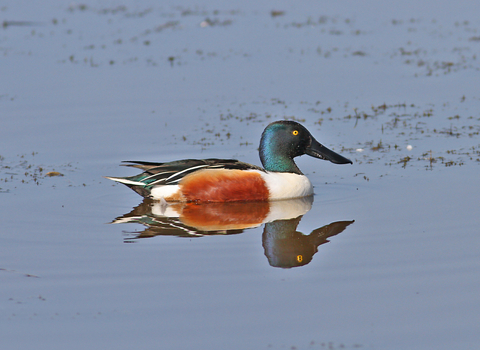
Shoveler © Gary Cox

©Guy Edwardes/2020VISION
Shoveler
Living up to its name, the shoveler has a large and distinctive shovel-like bill which it uses to feed at the surface of the water. It breeds in small numbers in the UK, but is widespread in winter.
Scientific name
Anas clypeataWhen to see
January to DecemberSpecies information
Statistics
Length: 47-53cmWingspan: 77cm
Weight: 630g
Average lifespan: 3 years
Classified in the UK as Amber under the Birds of Conservation Concern 5: the Red List for Birds (2021). Protected in the UK under the Wildlife and Countryside Act, 1981.
